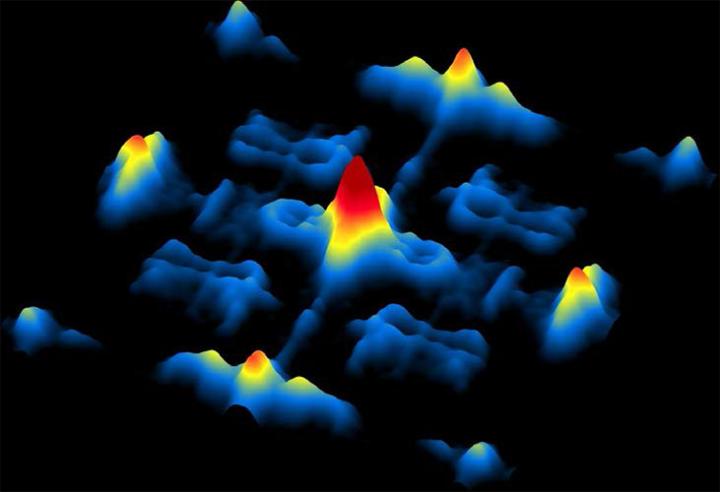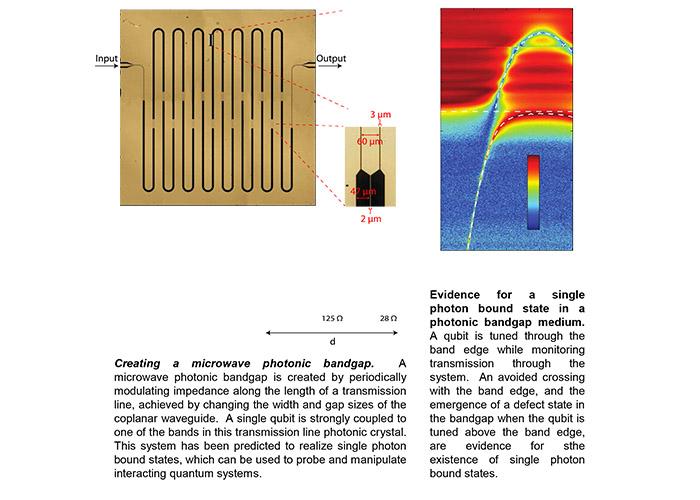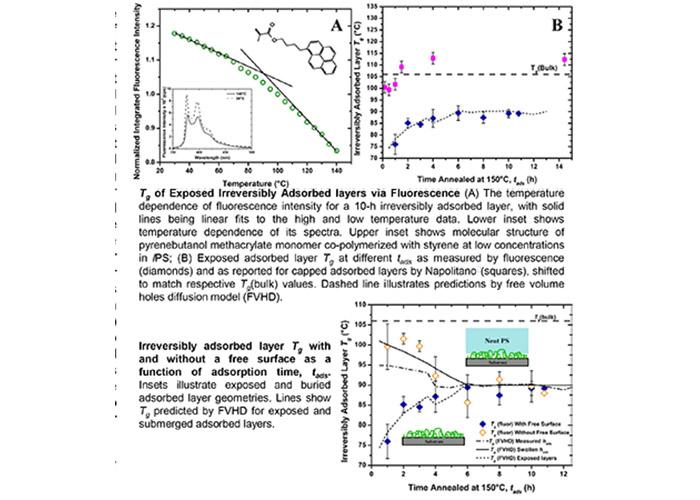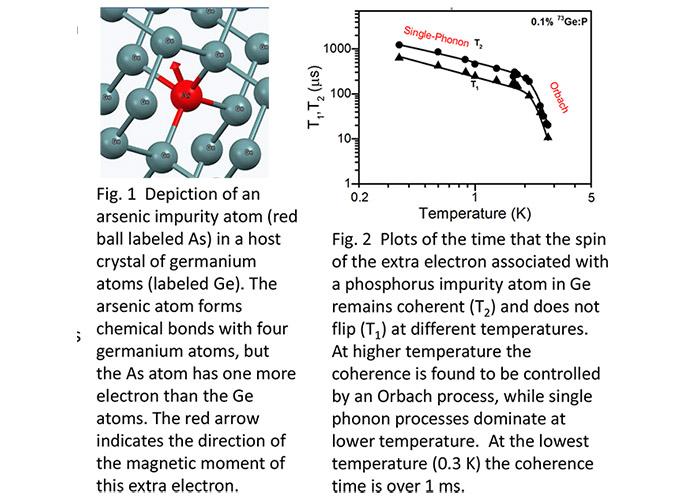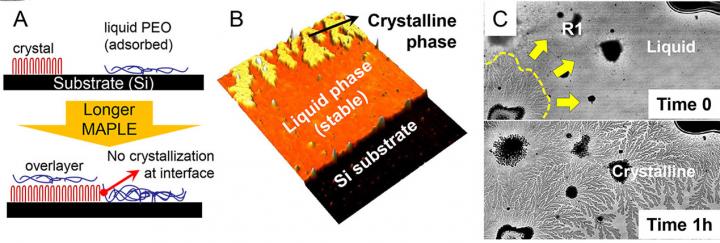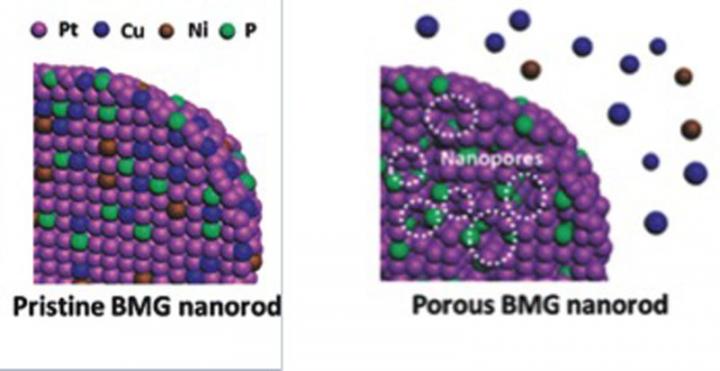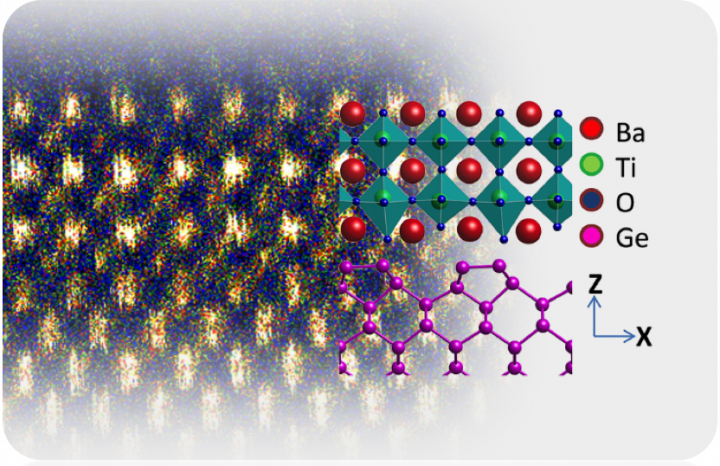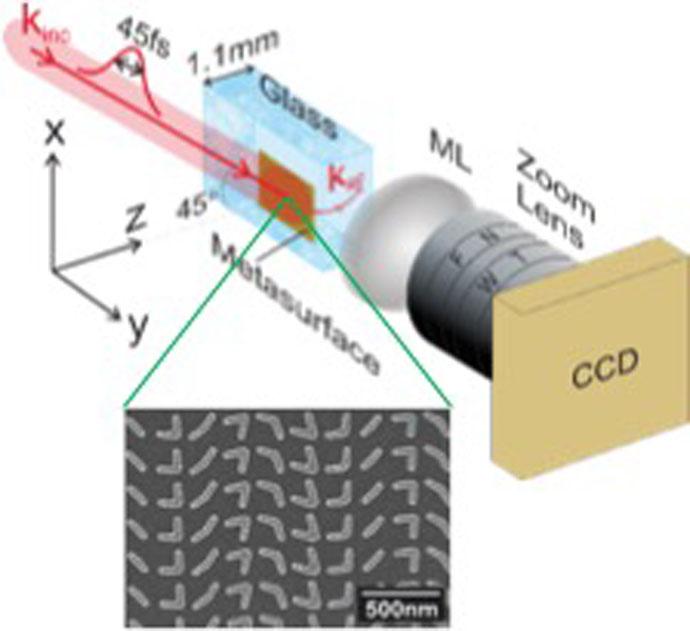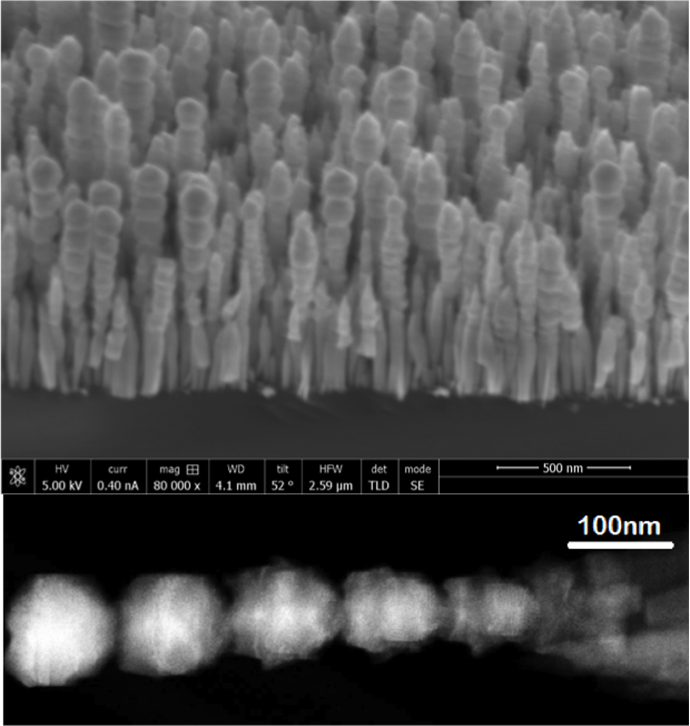Program Highlights for year 2016
Weyl semimetals are newly discovered topological electronic materials in which surface electrons (Fermi arcs) are topologically connected with those of the bulk. Princeton researchers have found experimental evidence that electrons can transverse the bulk through the special momentum states, called Weyl points, moving between opposing surfaces.
Photonic crystals provide an extremely powerful toolset for manipulation of optical dispersion and density of states. Princeton researchers' recent work opens exciting prospects for engineering long-range spin models in the circuit QED architecture, and new opportunities for dissipative quantum state engineering.
Princeton University researchers are investigating how the Tg of an adsorbed layer is influenced by the free surface and employing a fluorescence technique to directly measure the Tg of the adsorbed layer buried in a film.
An international collaboration led by Princeton University IRG3 researchers have measured electron spin coherence in germanium for the first time.
Princeton researchers found that deposition temperature can significantly affect the stability of liquid phase PEO in MAPLE (matrix assisted pulsed laser evaporation)-deposited films, which results in different crystallization kinetics.
Successful synthesis of novel MOF compositions employing “in-house made” organic linkers.
These MOF compositions displayed superior catalytic ability in the conversion of fatty acid methyl esters (FAMEs) into liquid fuel hydrocarbons.
Synthesis of microporous carbon membranes derived from metal organic frameworks for natural gas purification.
Metallic glass nanostructures provide a new platform for electrocatalytic applications. Several surface modification strategies that remove or add metal species (images, right) improve the catalytic activity of metallic glass nanostructures. These strategies were demonstrated for three key electrocatalytic reactions important for renewable energy.
Strong interactions at the interface between a crystalline film and substrate can impart new structure to thin films. Here, a germanium surface (purple atoms) squeezes a BaTiO3 thin film above, revealing a hidden phase not seen in the bulk. The hidden phase of BaTiO3 shows oxygen octahedra cages (shaded in aqua) alternating in size.
Artificially designed planar devices known as metasurfaces can control the output of an incident beam to generate prechosen patterns.
Present day silicon chips for communication and computing are densely packed with transistors and other passive elements.
Pages

